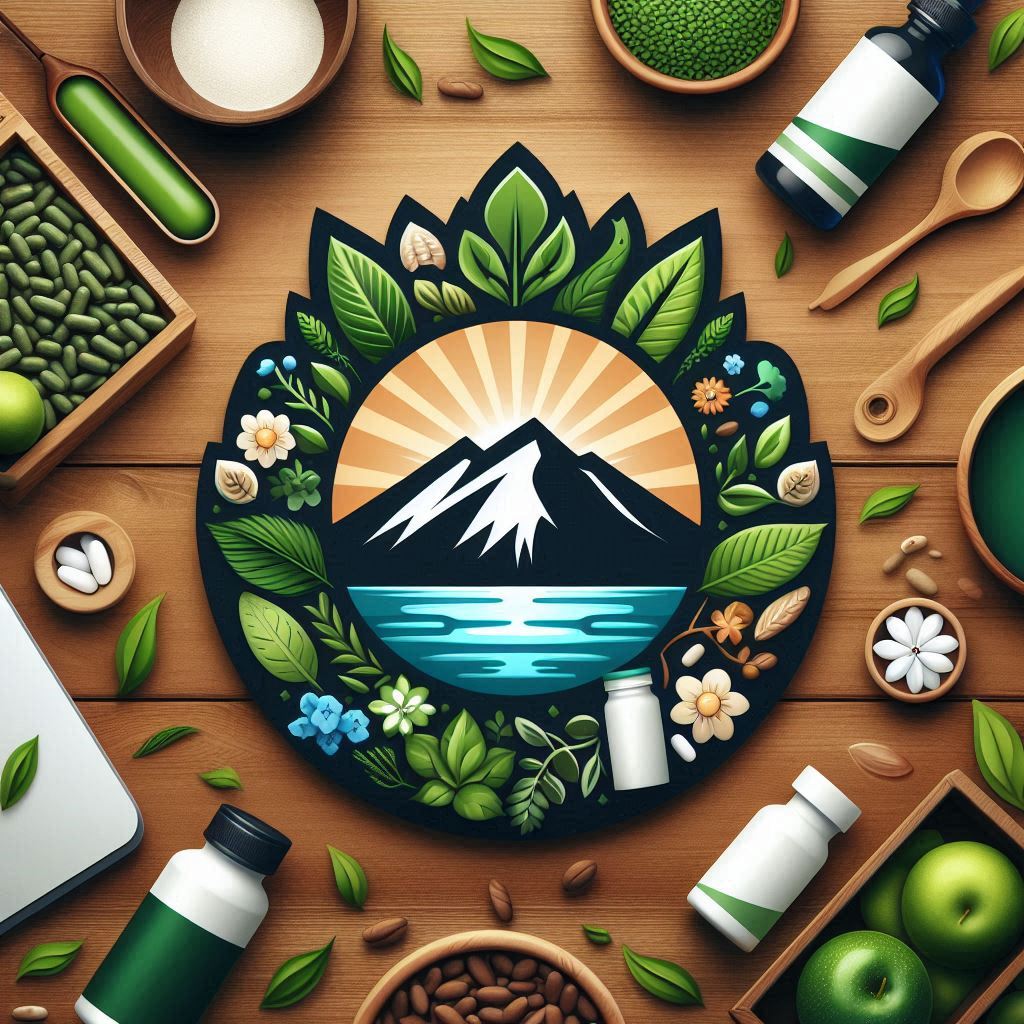Herbal supplements for skin health have become pretty popular, with more people skipping the synthetic stuff and going back to nature. I’ve spent a lot of time researching and personally trying out various herbs and formulas to see what actually helps skin look smoother, brighter, and more resilient. There’s a big world beyond just slathering on creams or serums. Some botanicals actually work best when you use them internally, and some give solid results both inside and out.
Here’s a quick rundown on how my favorite skin-boosting herbs stack up, and then I’ll get into more detail so you know what’s really worth considering for your own daily routine.
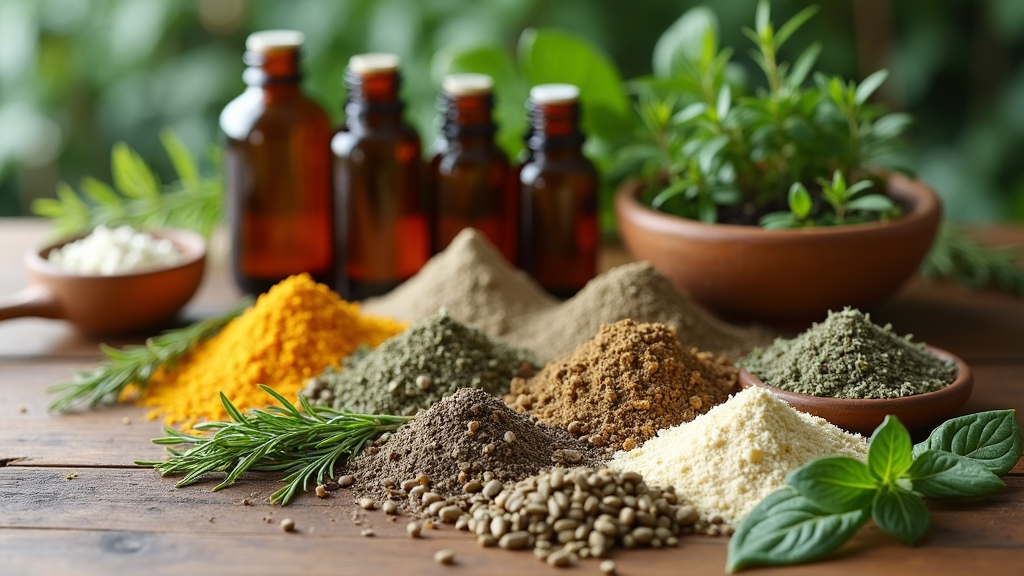
My Top Picks for Herbal Supplements for Skin:
- Gotu Kola – Bumps up collagen and heals scars.
- Amla Berry – Antioxidant, brightens, and fights dullness.
- Turmeric – Tackles inflammation and evens tone.
- Licorice Root – Fights spots and soothes irritation.
- Burdock Root – Clears up acne and detoxes from within.
- Sea Buckthorn – Helps moisturize deeply and support barrier health.
- Aloe Vera – Calms, hydrates, and helps heal dry or reactive skin.
How I Rate These Herbs:
Benefits: Science-backed results, long tradition of use
Availability: Easy to find in supplement shops, some available fresh or dried
Forms: Capsules, powders, teas, oils, and sometimes creams
Results Timeline: Most show results on skin in 4 to 8 weeks of regular use
Best For: Most common skin struggles, including dullness, acne, redness, texture, and dryness
One thing I always stress: what you put inside your body matters as much as what you apply outside. Using both approaches often gives the best results. When you can help your skin from the inside and calm it on the outside, you cover all your bases.
Why Consider Herbal Supplements for Skin?
Modern life is filled with stresses that can really mess with your skin. Pollution, processed foods, high sugar diets, poor sleep, and even daily stress all chip away at skin health over time. While skincare products can help from the outside, herbal supplements work on a deeper level. They support everything from cell turnover and barrier repair to inflammation management and detoxification. When you add botanicals to your daily habits, you can give your body added tools to keep your skin looking and feeling its best.
Herbs have been used in Ayurveda, Traditional Chinese Medicine (TCM), and folk healing for hundreds, sometimes thousands, of years. Modern research is catching up and confirming what ancient healers have observed: these plants can be pretty powerful for helping skin look and feel its best. The active compounds in herbs work to protect, soothe, and repair, whether you’re facing redness, breakouts, or tired, lackluster skin.
How Herbal Supplements Work for Skin Health
Most of the best herbal supplements for skin do a few key things:
- Fight oxidative stress (which can age you faster).
- Reduce inflammation linked to acne or sensitive skin.
- Boost collagen, which keeps skin firm and smooth.
- Even out skin tone and fade hyperpigmentation.
- Support the gut and liver, two organs that directly affect how your skin behaves.
Not all supplements are created equal, though. Some are better absorbed or more powerful in certain forms, and you want to pay attention to quality for the best results. Sometimes, whole herbs provide a gentle effect that builds with time. In other cases, a standardized extract can pack more punch. Picking the right type and source is half the battle.
🌱 Top Herbal Supplements for Skin Health
1. Gotu Kola (Centella asiatica)
If scarring, stretch marks, or slow healing is a problem, Gotu Kola is a goto. Studies show it encourages your skin to make more collagen and helps wounds close up faster. Traditional medical systems, especially Ayurveda and TCM, have used Gotu Kola for generations. I see it work best in people dealing with acne scars or those trying to support healing after dermatological procedures.
Benefits: Boosts collagen, smooths out old marks, keeps skin elastic.
How it Works: Gotu Kola increases fibroblast activity (the cells responsible for making collagen) and raises mucopolysaccharide levels. This helps keep skin bouncy and plump.
Best Forms: Standardized capsule or powder (look for extracts with at least 10% asiaticoside or madecassoside).
How to Use: Take 1 or 2 capsules or 300 to 500 mg of powder daily. You can also add a topical serum for scar minimization. Combining both often works best.
Find it in: Supplements, soothing creams, K beauty cica creams.
2. Amla (Indian Gooseberry / Emblica officinalis)
Amla might not be on everyone’s radar, but it’s one herb I always mention for skin brightening and antioxidant protection. It’s loaded with vitamin C, far more than oranges, and has a punch of polyphenols that defend skin against oxidative stress and UV damage.
Benefits: Fights dullness, brightens dark spots, encourages collagen, protects from UV.
How it Works: Antioxidant compounds neutralize free radicals. Vitamin C boosts collagen and repairs cell damage.
Best Forms: Powder or capsules. Super easy to blend into smoothies or juices.
How to Use: 500 to 1,000 mg daily. Topically, look for amla serums in the K beauty aisle.
Find it in: Glow promoting supplements, often stacked with other antioxidants.
3. Turmeric (Curcuma longa)
Turmeric is a mainstay in both Indian food and herbal medicine. It’s great for keeping inflammation down, which helps reduce redness, acne, and even fine lines. The curcumin in turmeric also interferes with melanin pathways, making it popular for evening out skin tone.
Benefits: Balances skin tone, calms inflammation, keeps acne away.
How it Works: Curcumin inhibits inflammatory messengers and can reduce pigment production.
Best Forms: Turmeric capsules with piperine (black pepper extract) or phytosome formulas like Meriva or BCM95 for better absorption.
How to Use: 500 to 1,000 mg daily with food.
Tip: If you try homemade turmeric face masks, always mix with yogurt, honey, or a carrier oil. Otherwise, you might end up a bit yellow for a day!
4. Licorice Root (Glycyrrhiza glabra)
Licorice root gets a lot of love for its calming effects on red, reactive skin, and it’s a safer option for fading stubborn spots compared to harsh chemical peels. The ingredient glabridin is the magic worker here, blocking the enzymes that make skin darken.
Benefits: Eases redness, calms sensitive skin, fades pigmentation.
How it Works: Glabridin blocks tyrosinase, which is the enzyme involved in making extra pigment (melanin).
Best Forms: Standardized capsules (look for deglycyrrhizinated licorice, DGL, for fewer side effects), or topical creams.
How to Use: 250 to 500 mg standardized extract daily, or use a skin brightening cream with licorice extract for dark spots.
5. Aloe Vera
Aloe isn’t just for sunburns. I like it for calming irritated, dry, or flaky skin. It’s packed with water and soothing compounds, making it ideal for restoring skin after sun, eczema, or even shaving irritation.
Benefits: Hydrates, soothes, supports repair after damage.
How it Works: Mucopolysaccharides (long chains of sugar molecules) help lock in moisture. Polysaccharides and glycoproteins help wounds heal faster.
Best Forms: Inner leaf gel in drinkable form or 99% pure topical gel.
How to Use: Drink aloe juice (look for inner leaf, not whole leaf), or apply gel to any dry, reactive, or sunburned areas.
6. Burdock Root (Arctium lappa)
Burdock root is a staple in traditional herbal remedies for “bad blood.” Turns out, that oldschool wisdom has some truth to it; burdock helps move lymph and supports liver detox, both of which are connected to acne and overall skin clarity.
Benefits: Fights breakouts from the inside, improves lymph flow, may soothe eczema.
How it Works: Contains antioxidants and prebiotics; improves detox pathways.
Best Forms: Dried root for tea, capsule, or tincture.
How to Use: Brew 1 or 2 teaspoons of sliced dried root into tea, or take as directed on the bottle. It works especially well when stacked with dandelion or red clover.
7. Sea Buckthorn (Hippophae rhamnoides)
Sea buckthorn is one of the few botanicals with a rare fatty acid called omega7 (palmitoleic acid), making it super helpful for rebuilding the skin barrier, fighting dryness, and calming redness. Plus, the orange color means it’s loaded with carotenoids, skin’s favorite antioxidants.
Benefits: Deep hydration, barrier support, fights aging, calms eczema and rosacea.
How it Works: Supplies vitamin E, omega7, and carotenoids for resilience and glow.
Best Forms: Cold pressed oil (look for CO2 extraction) to take by mouth or use topically.
How to Use: 1 or 2 ml (about half a teaspoon) oil daily by mouth, or a few drops massaged into clean damp skin as a serum.
🔬 Underrated or Emerging Herbs for Skin Health
Gynostemma pentaphyllum (Jiaogulan)
Gynostemma is basically an adaptogen superstar. If your skin tends to freak out when you’re stressed, throw this one into your supplement routine. It calms inflammation, supports your metabolism, and reduces cortisol, which helps keep the skin barrier strong and breakout-free.
Benefits: Clears up stress breakouts, supports overall resilience.
Tips for Use: Find it in teas or capsules; pair with antiinflammatory herbs like turmeric for best results.
Schisandra chinensis (Magnolia Berry)
Schisandra is popular in TCM for promoting youth and radiance. It’s packed with lignans, which are natural compounds that help protect your liver and manage inflammation. Since your skin reflects liver health, this one is worth a look.
Benefits: Protects against environmental damage, adds radiance, soothes stressed skin.
Ways to Use: Powder or capsule, awesome for adding into smoothies or herbal blends.
Polygonum multiflorum (Fo-Ti, He Shou Wu)
This herb shows up in formulas for both hair and skin aging. If you’re worried about dull complexion or age spots, processed foti (never raw, as raw can be rough on the liver) supports healthy, even tone over time.
Benefits: Keeps skin and hair youthful, supports natural glow.
Watch-out: Always use “prepared” or “processed” foti, and don’t megadose.
Moringa
Moringa isn’t just a nutrition trend. The leaves are loaded with vitamins A, C, and E, plus chlorophyll, a good combo for fighting dullness and dehydration. You can sprinkle it on oatmeal or stir into juice blends for a daily skin boost.
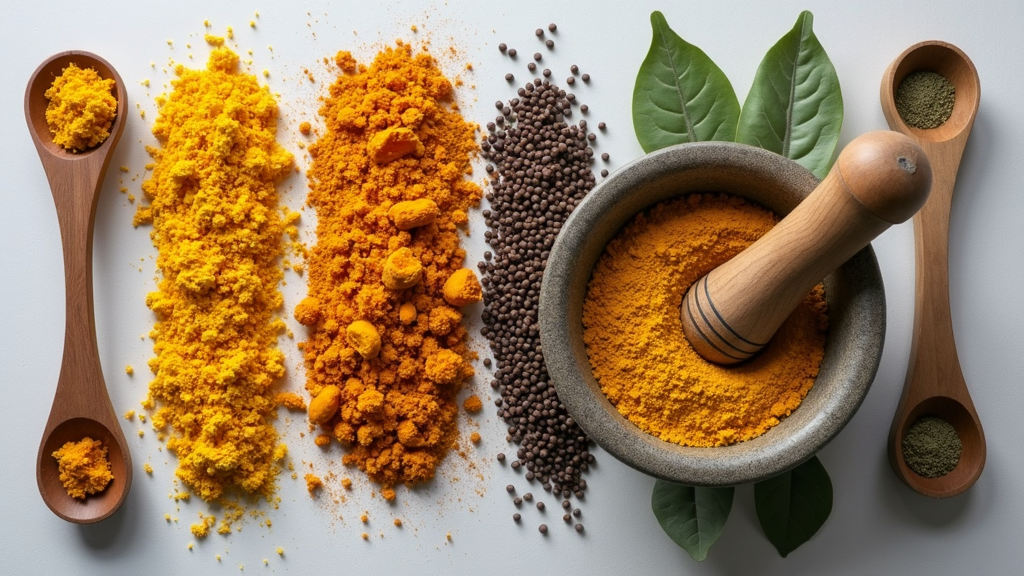
🌼 Popular Herbal Stacks for Skin Goals
When you combine herbs with different actions, you can get bigger results, faster. Some of my favorite combos for skin:
- Glow/Even Tone: Amla + Licorice + Schisandra + Zinc
- Plump/Youthful Skin: Gotu Kola + Sea Buckthorn Oil + Curcumin (with piperine)
- Breakouts/Inflammation: Burdock Root + Turmeric + Dandelion + Green Tea Extract
- Dryness/Eczema: Aloe Vera + Sea Buckthorn + Borage Oil + Omega3s
- Stress Breakouts: Ashwagandha + Schisandra + Holy Basil + Gynostemma
If you’re new to herbal stacks, start slow and pay attention to how ingredients interact for you personally. Sometimes less is more, especially with potent ingredients like curcumin or foti. Take notes and listen to your body.
✅ Best Practices for Using Herbal Supplements for Skin
- Combine Internal and Topical: Using a turmeric supplement and a licorice cream together, for example, usually delivers more visible results than one alone.
- Give it Time: Consistency matters. Most herbs need 4 to 8 weeks to start making a visible difference in skin, so stick with it.
- Cycle Detoxers: Stacking herbs like burdock or dandelion root can be good for “spring cleaning” runs. Try 2 to 4 weeks on, then give your body a break.
- Watch for Sensitivities: Just because these are natural doesn’t mean you can’t react. Always introduce one new supplement at a time.
- Test for Quality: Get supplements from reliable brands. Look for third party testing or certifications for purity.
Potential Side Effects and Safety
While most herbs are pretty safe when used as directed, it’s important to keep a few things in mind:
- Watch Out for Overuse: Just because a little is good doesn’t mean more is better. High doses, especially of concentrated extracts, can cause tummy upset or other odd symptoms.
- Interactions with Meds: Some botanicals, like licorice, can raise blood pressure or interact with prescription drugs. Double-check with your healthcare provider.
- Allergies: Start slow, especially if you have a history of plant allergies.
- Pregnancy and Breastfeeding: Safety data is often limited. Always check with your doc before starting new supplements during this time.
Where to Buy – And What to Look For
You can find most of these herbal supplements online or at local health food shops. Here’s what I look for to make sure I’m getting the good stuff:
- Organic or wildcrafted ingredients
- Standardized extracts, and clear labeling of active compounds
- Freshness (herbal powders should be bright in color, not gray or faded)
- Third party lab testing for quality
- No weird fillers or artificial ingredients
Top supplement brands for quality herbal preparations include Gaia Herbs, Himalaya, Nature’s Way, and Pukka. When possible, use whole herb formulas instead of just isolated actives. Sometimes it’s the full spectrum of compounds in the plant that does the heavy lifting for your skin.
Supporting Your Herbal Supplement Routine: My Tips for Success
Pair Herbs with Smart Lifestyle Choices
While herbs really help, they can’t do all the work. Pair them with some simple habits for better skin results:
- Drink plenty of filtered water.
- Aim for 7 or 8 hours of sleep a night.
- Keep your sugar intake in check.
- Load your meals with colorful veggies and healthy fats.
- Move your body daily; sweat helps skin detox.
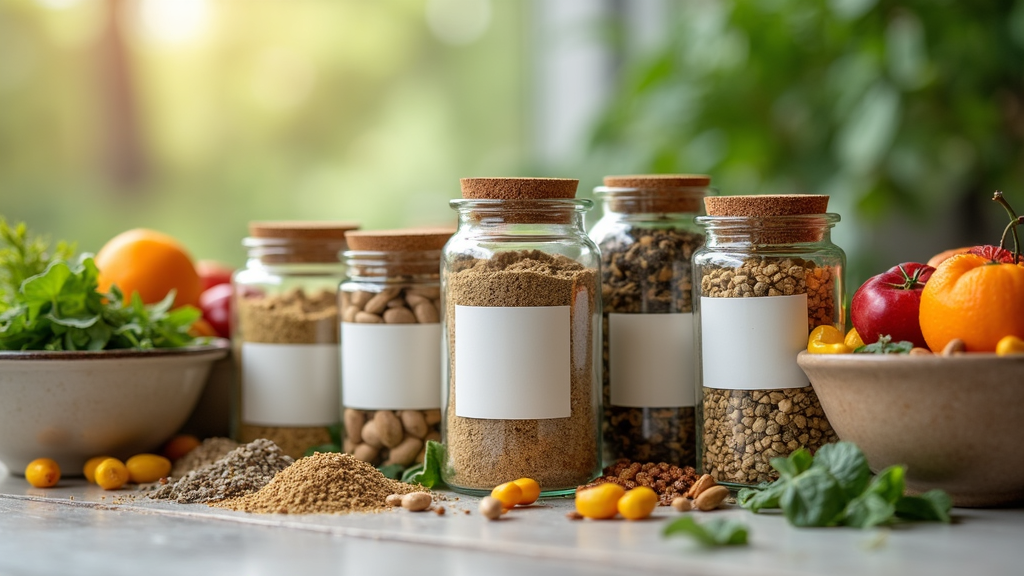
Mix Topical and Internal Approaches
Sometimes I use the same herb inside and out. A good example is sea buckthorn. I’ll take the oil orally for moisture, and tap a drop or two on dry areas of my face for quick relief. Ditto with aloe; drink a little juice and apply gel to spots that feel cranky or burnt.
My Experience with Herbal Supplements for Skin
I got into herbal skin remedies after dealing with stubborn breakouts and lingering marks from old acne. Topical stuff helped a little, but the real big change came when I started supporting my skin from within, especially with herbs like amla, turmeric, and burdock root. After about a month, I noticed my skin looked livelier, less dull, and just felt calmer. For extra stubborn issues, like redness or pigmentation, I found stacking two or three botanicals (like turmeric and licorice) really made a difference. Over time, I started seeing the benefits stick around longer, and even my friends noticed the boost in my complexion.
Success Stories from the Community
I’ve heard from plenty of readers and friends who had similar results. Some started burdock root teas and saw breakouts calm down within weeks, while others swore by taking amla for a month for extra glow. A few folks managed to shrink the look of old scars with daily gotu kola capsules and topical gels. Of course, individual results vary, but it’s super encouraging to see how much these ancient botanicals still deliver, even in the era of high tech skincare.
Trendy and Buzz-Worthy Herbs — Which Ones to Watch
- Cica (Centella asiatica): Already big in Korean skincare and taking off in supplements too.
- Bakuchiol: Plantbased “alternative to retinol,” usually extracted from Psoralea corylifolia. Gentle and helpful for fine lines and elasticity.
- Manjistha (Rubia cordifolia): Common in Ayurvedic blends for clearing up congestion and discoloration.
- Astragalus: TCM herb to protect skin from stress and pollution. Not as big in the West, but worth following.
Pricing – What to Expect for Quality Herbal Supplements
Here’s what I typically see for prices (USA):
- Single herb capsules: $12 to $25 for 60 to 100 capsules
- Powders (100 grams): $9 to $18 per pack
- Herbal teas: $6 to $12 per box
- Oils (sea buckthorn, moringa, etc.): $13 to $30 per ounce for cold pressed versions
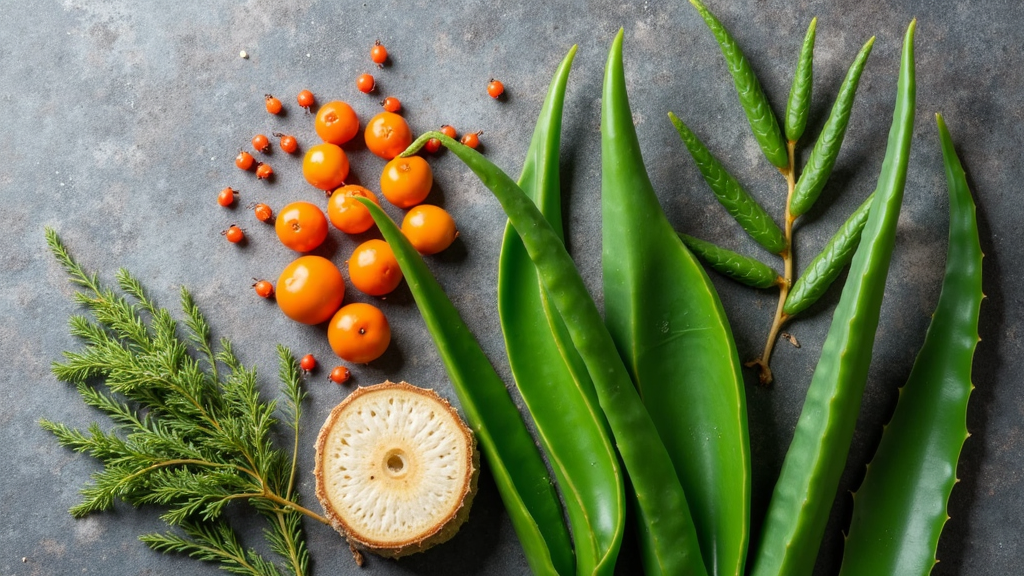
It pays to avoid super cheap brands. Quality herbs do cost a bit more, but you get better results and avoid contaminants or old, oxidized materials. For most people, you don’t need a dozen products. Pick one or two priorities, like dullness or acne, and stack two well chosen herbs to start with. Give your body time to adjust and notice how your skin feels after a month or two of steady use.
Who Should Skip Herbal Skin Supplements?
- Anyone on prescription meds with known herb interactions.
- If you’re pregnant or nursing without medical guidance.
- If you have allergies to specific plants.
- If you’ve had organ transplants, as many herbs stimulate immunity.
If you’re in any of these groups, check with your doctor or a clinical herbalist before starting any supplement. Safety first, and remember, what works for one person may not work for another.
Getting the Most Out of Herbal Skin Supplements: My Hacks
- Mix up formats: Have a licorice tea in the afternoon, then use a turmeric capsule at night.
- DIY topical blends: Stir a pinch of amla or turmeric powder into plain yogurt as a simple face mask (spot test first).
- Take with food: Especially fat soluble herbs like sea buckthorn oil; this helps absorption and cuts down on stomach discomfort.
- Cycle for 2 or 3 months: Watch skin’s response, tweak your stack based on season or needs.
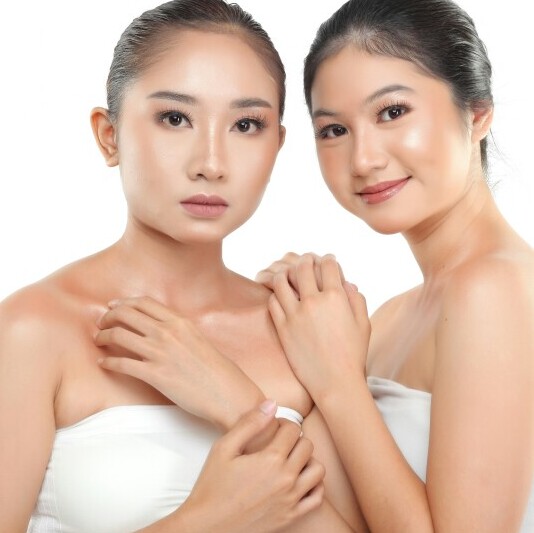
It can take a little tweaking to figure out what your skin loves best. Keep a little journal or just take progress photos, since sometimes those small changes sneak up on you before you realize how much better your skin looks and feels.
Herbal Supplements vs. Skincare Products: Do You Need Both?
I get asked this a lot. My take: internal herbs work by switching up things like inflammation, detox pathways, and cell turnover. Topical skincare can target immediate symptoms such as dryness, redness, and spots, but works best as part of a bigger picture plan. When you combine both, you address root causes and get more visible results that last. You don’t have to pick one or the other; use them together for a skin care plan that fits your lifestyle.
If your skin’s not where you want it to be, or you just want to try a more natural approach, herbal supplements are worth exploring. They aren’t magic pills, but paired with common sense lifestyle habits and topical care, you might be surprised at how they help your skin really glow.
Questions or Tips?
If you’ve tried any of these or have tips of your own, I’d love to hear about it. Feel free to drop your experience or ask questions in the comment section below. I check in regularly and can help you pinpoint a good starting point or stack for your skin goals!
